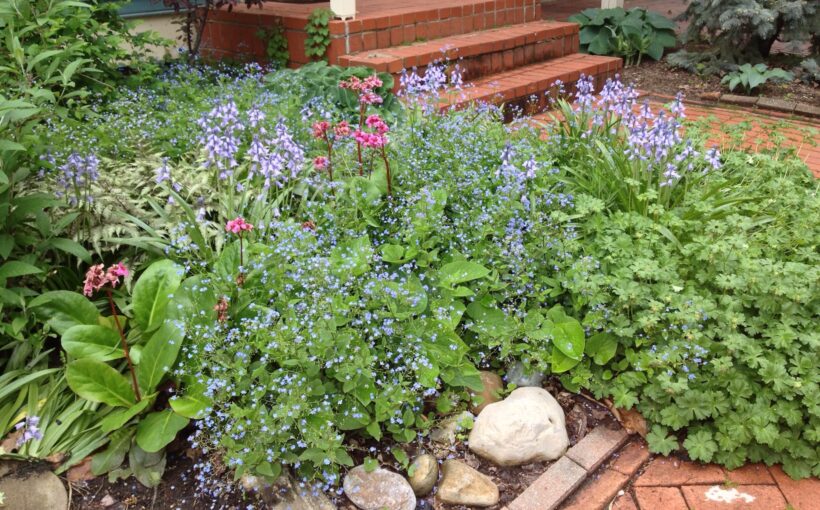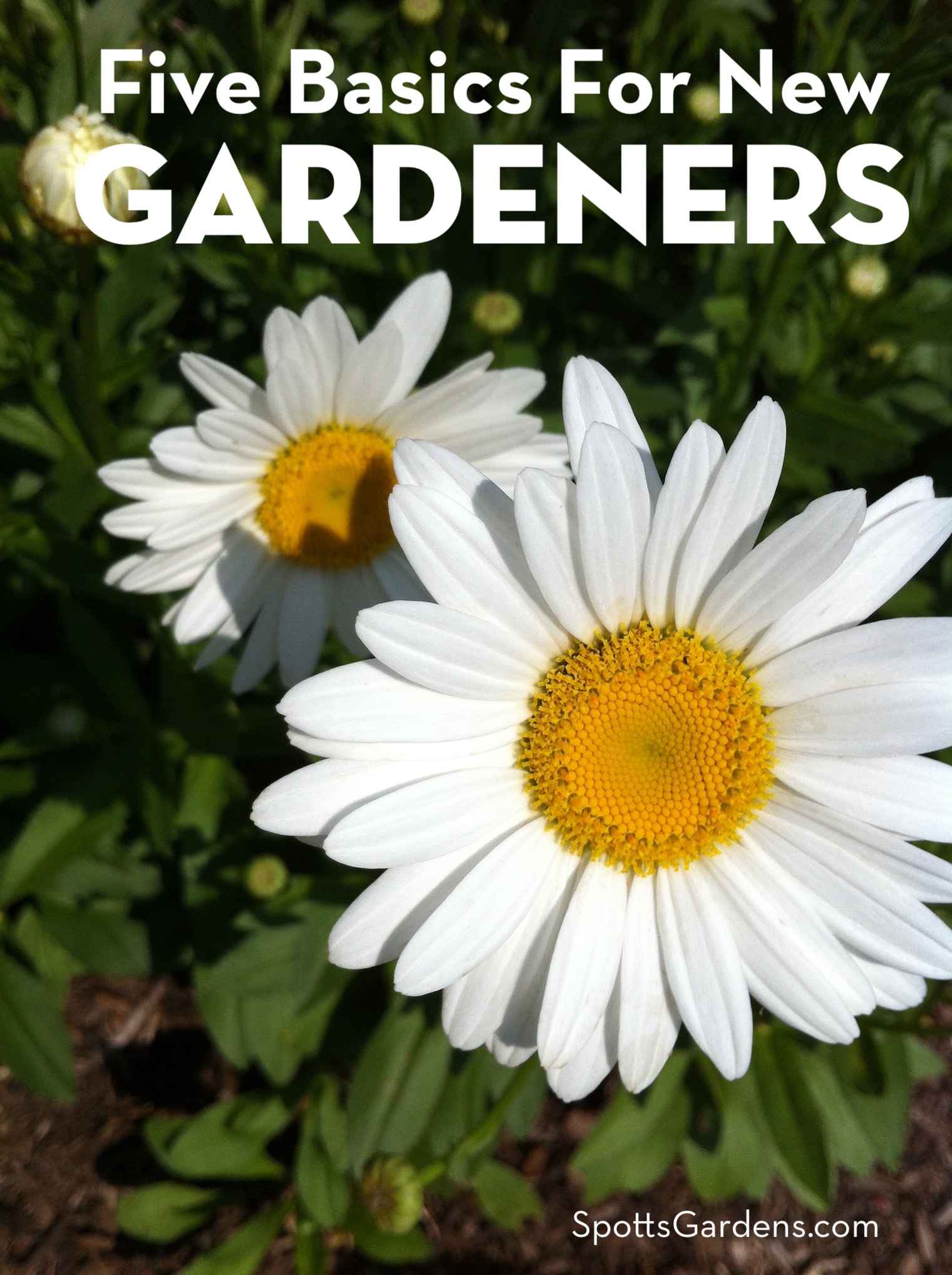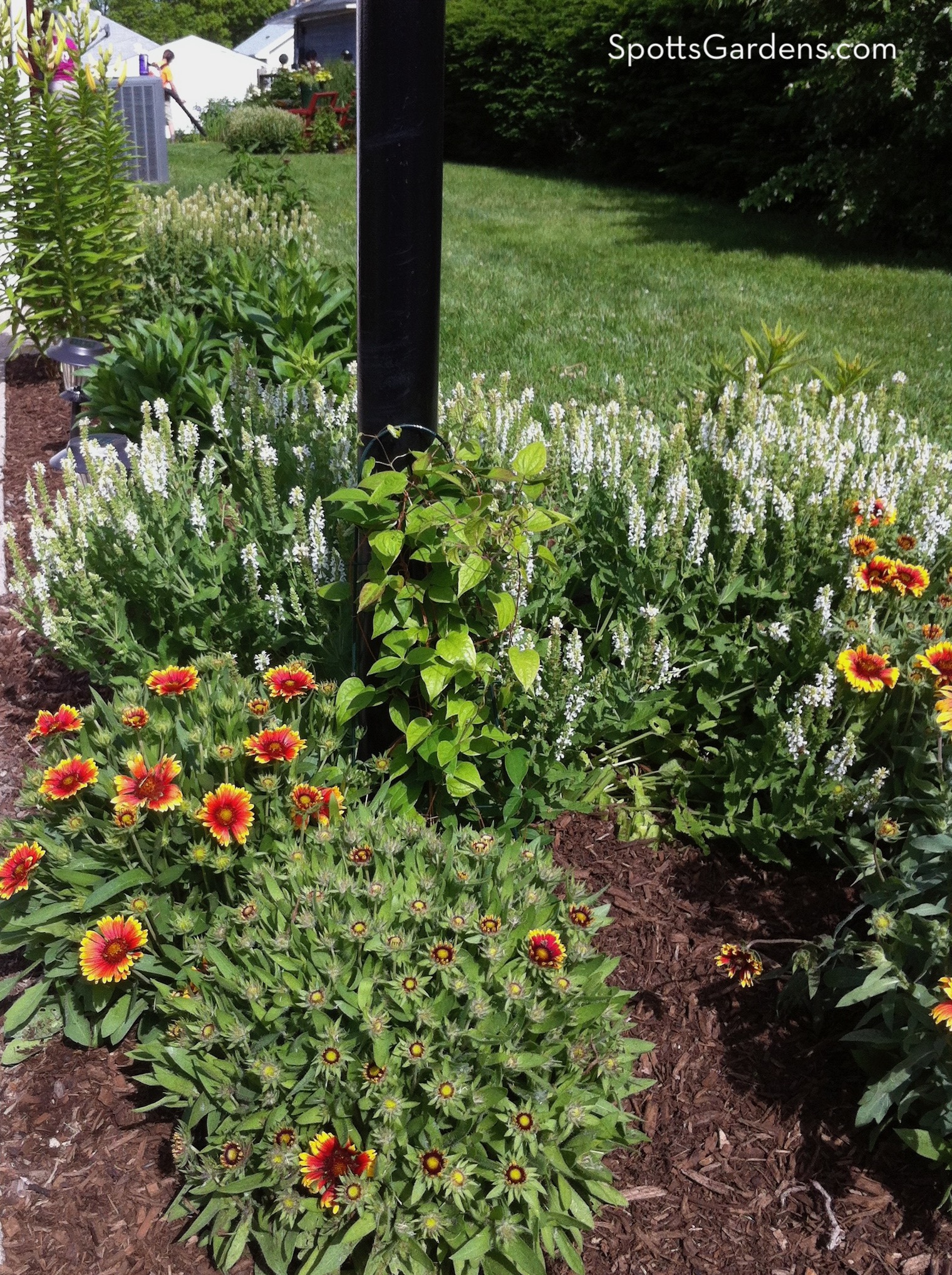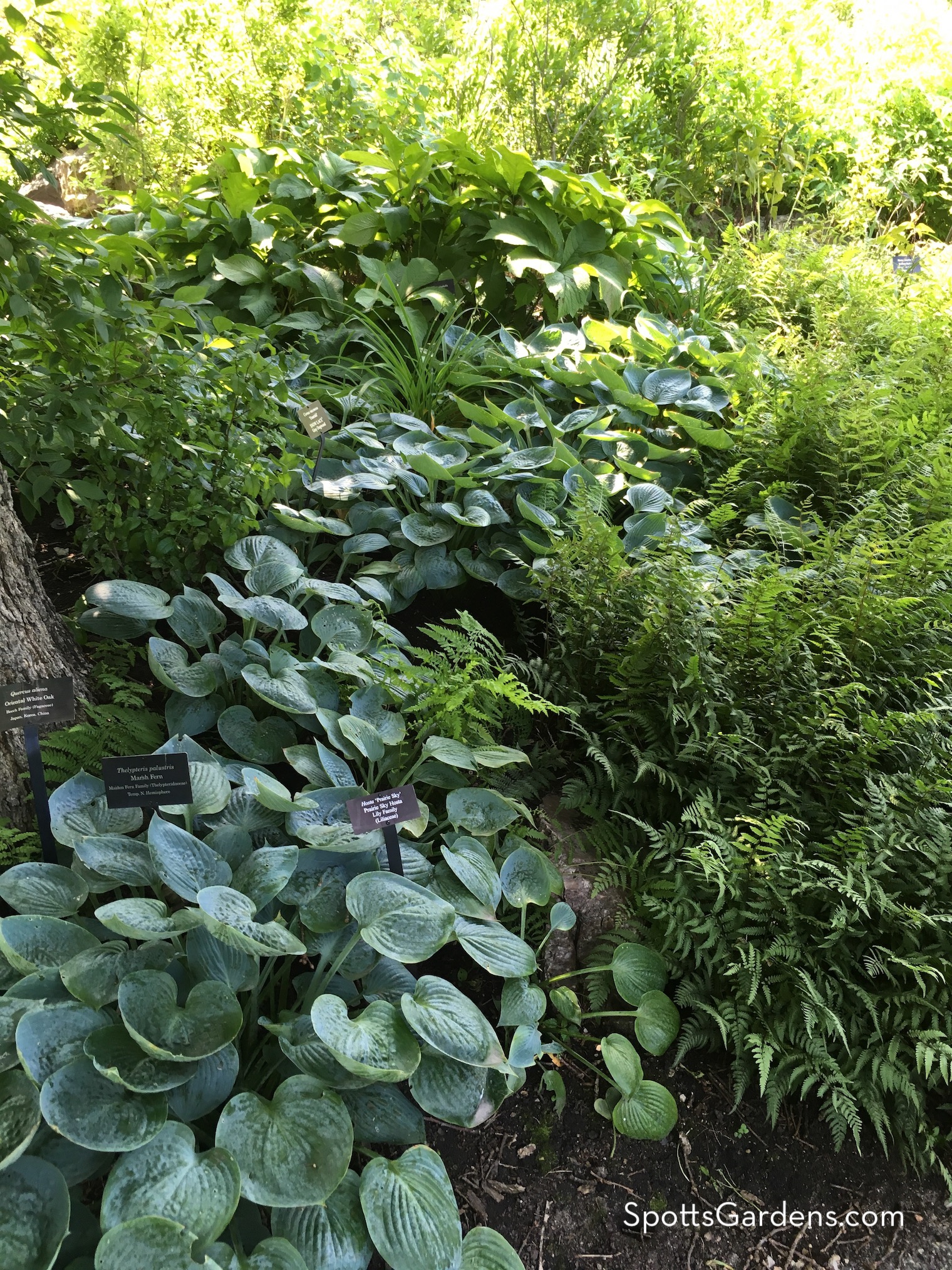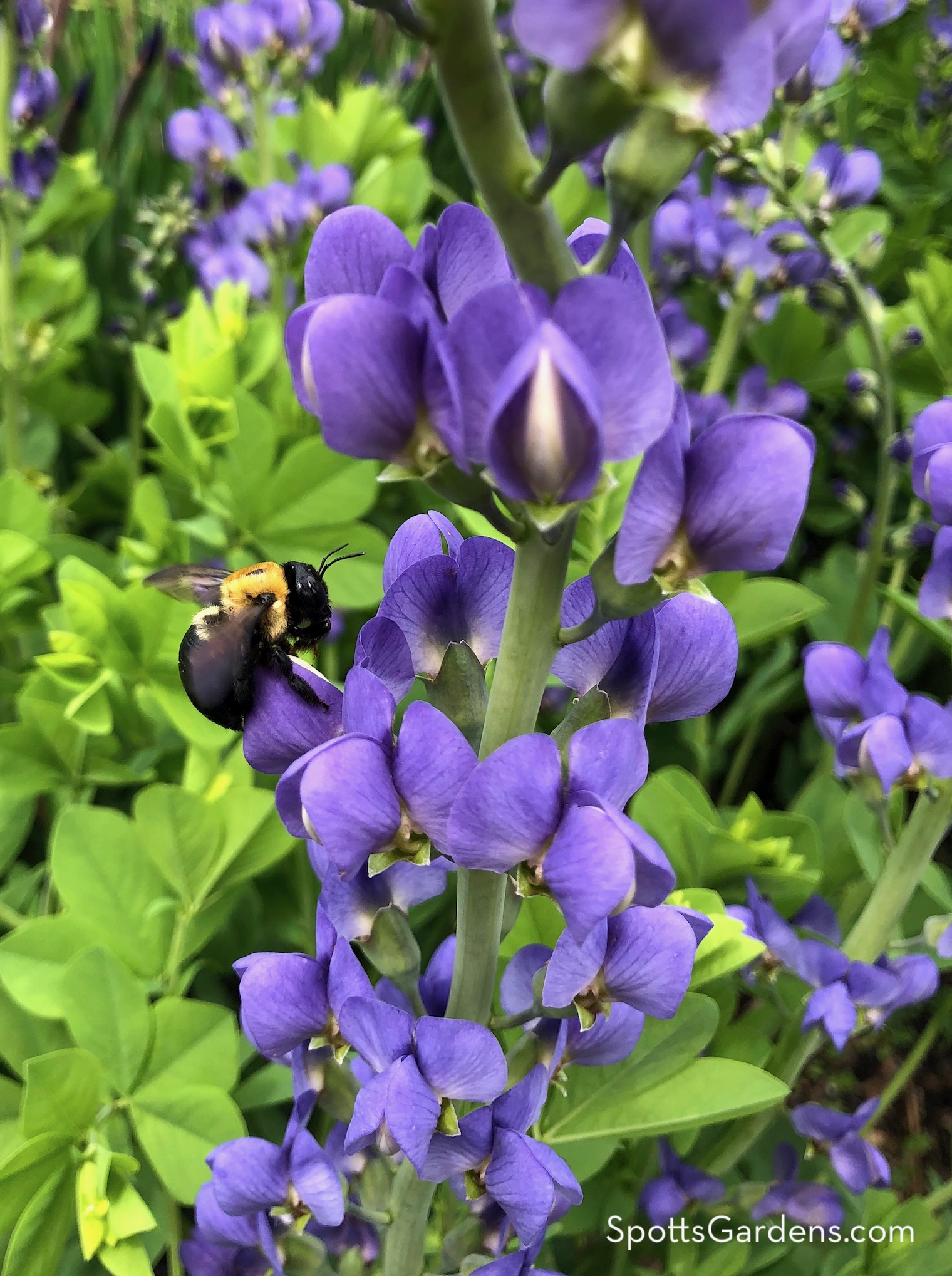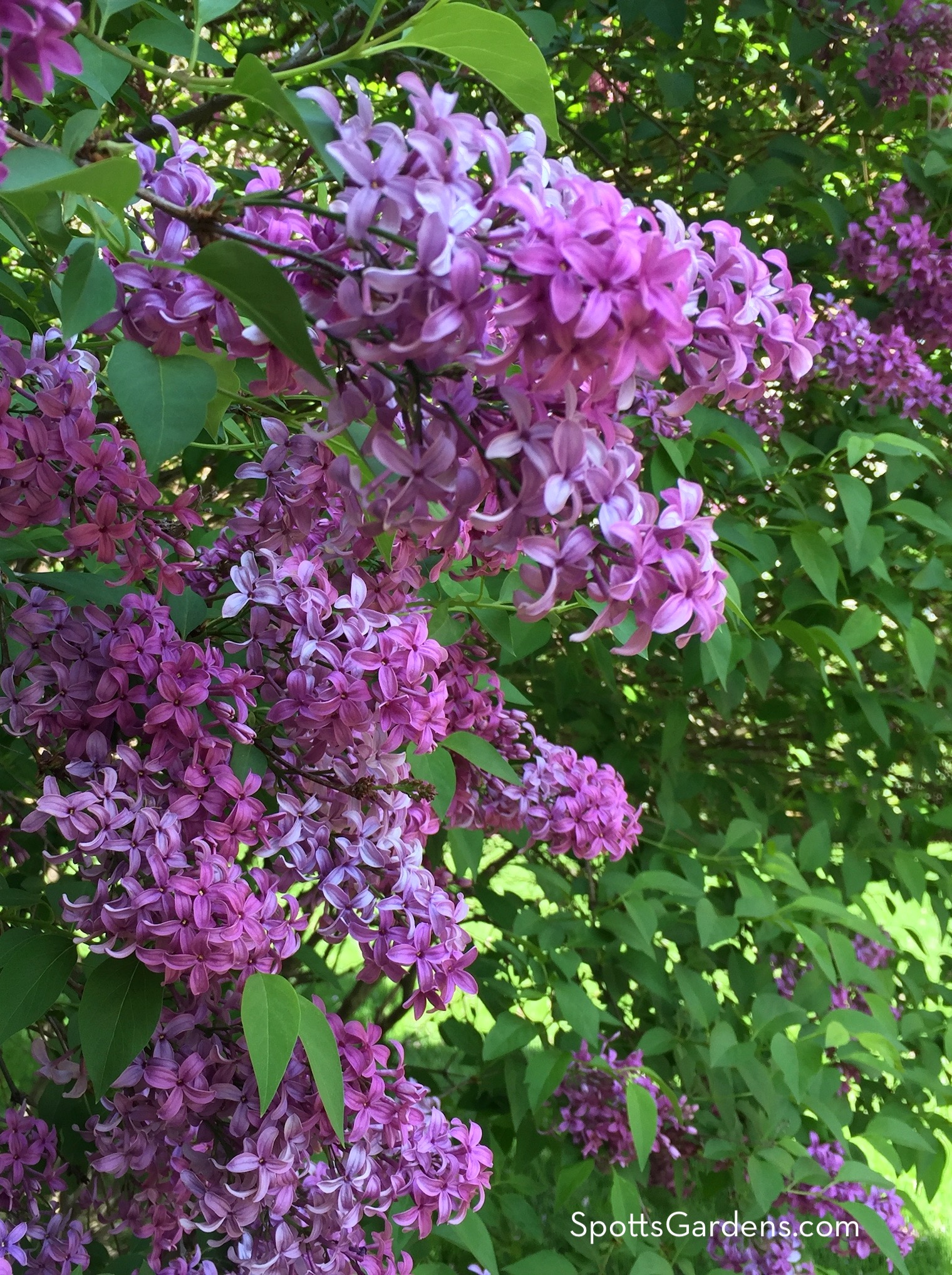New gardeners are sometimes overwhelmed by the amount of information available about gardening. But we promise, you don’t need to be an expert to grow a great garden! Instead, start with our five basics for new gardeners, and grow from there.
1. Do a little reading.
Because gardens vary so dramatically from place to place, there’s no one-size-fits-all gardening guide. So we recommend new gardeners start with two books: one that’s a general introduction and one that’s specific to your region.
A good introductory book will give you the basics of soil science, how plants grow, how to plant, and how to prune. The Garden Primer: The Completely Revised Gardener’s Bible, by Barbara Damrosch, is our favorite for comprehensiveness. We also love the user-friendly The Way We Garden Now, by Katherine Whiteside, with pick-and-choose garden projects.
Supplement with a regional gardening guide, like these from Timber Press (Midwest, Northeast, Southwest).
If you’re starting a food garden, check out our one-stop post for food gardening in Indiana. Our favorite book for new gardeners starting out with growing food is Starter Vegetable Gardens, by Barbara Pleasant.
Finally, check out your local extension office’s online offerings. Extension is a partnership between state, federal, and county governments to provide scientific knowledge and expertise to the public. There’s one in every state, based at a state university. This is the best place to get science-backed information that’s relevant to your area. Here in Indiana, we have the Purdue University Cooperative Extension Service.
2. Start small, especially if you’re growing food.
We strongly recommend new gardeners pick a small portion of the yard to focus on. Resist the temptation to plant several beds at once; you’ll be exhausted from weeding by July.
Instead, start with one or two beds. Improve the soil with compost, then plant so that the mature plants will completely cover the soil. Use 2″ to 4″ of organic mulch on your beds until the plants grow thickly enough to crowd out weeds. Plan to weed weekly and water as needed. Established beds are less work than new ones; make sure you have your current beds under control before expanding.
If you’re starting a food garden, it’s especially important to start small. You can grow enough fresh salad crops for two average adults in a space 4’ x 4’, if you plant intensively. If you plan to grow some larger plants, such as tomatoes or melons, you might want two 4’ x 4’ beds. Start with these one or two beds and get a feel for how much work they require. You can add a bed or two each year until your garden is just the right size. Check out our full guide to food gardening here.
3. Get to know your site.
The cardinal rule of gardening is to put the right plant in the right place. That means you look at the conditions of your garden site and choose plants that like those conditions. To increase your chances of success in the garden, you need to know a few key things.
What hardiness zone are you in?
Based on average low temperatures, your hardiness zone tells you which plants are likely to survive in your garden. You can look up your zone on the USDA hardiness map. Here in central Indiana, we’re in zone 6a.
What kind of sun do you have in the space you’re wanting to garden ?
- Full sun means six hours or more of direct sunlight (sun hitting the plant’s leaves) a day.
- Part shade or part sun means four to six hours of direct sunlight a day.
- Full shade means fewer than four hours of direct sun a day.
- Spots under shallow-rooted trees require plants that are labeled as suitable for dry shade.
- Full western or or full southern sun is hotter than full sun with an eastern exposure.
What kind of water conditions do you have?
Is the weather usually hot and dry? Do you have a rainy season? Does it rain year round? Does the soil drain well, or does it stay wet most of the year? Or is it hot and dry from being surrounded by concrete?
What’s your soil like?
Is it dark in color and crumbly in texture? It’s probably loam, and it’s great for vegetable gardens. If it dries out quickly and doesn’t hold together well, it might be sandy. But if you squeeze a handful together and it stays together? You’re probably dealing with clay. We have a more complete explanation of soil here.
Especially if you’re in an urban space or one with recent construction, chances are your soil is lacking nutrients. A soil test can tell you more. To build better soil, add organic matter in the form of compost and mulch.
4. Go organic.
Organic gardens are healthier for you, wildlife, and the planet. And from a strictly economic point of view, using smart organic strategies is cheaper than spraying lawns and gardens.
Easy-to-implement organic strategies include:
- Putting the right plant in the right place.
- Improving soil through sheet mulching, composting, and using organic mulch.
- Using native plants wherever appropriate.
- Covering bare soil by planting thickly and using mulch until the plants are established.
- Never using pesticides and herbicides, which kill pollinators as well as the microorganisms that inhabit healthy soil.
5. Plan for the long term.
The average ornamental garden takes about three years to get established, a process we describe as “Sleep. Creep. Leap.”
- Year 1, plants appear to sleep, putting their energy into setting roots instead of growing larger.
- Year 2, plants creep. They’re still working on roots, but they’re also starting to grow.
- Year 3, the garden suddenly leaps into action! Plants grow larger, birds and pollinators move in, and the space starts to look like a mature garden.
When you plant, make sure you leave enough room for your plants to mature. A lilac that is 2′ tall when you plant may mature to 12′ tall and wide! So leave enough space between your plants for them to grow to their full size. Plant them so that mature plants will be at least 12″ to 18″ away from walls and fences.
A newly planted garden will seem to have huge spaces between the soon-to-be large shrubs and trees. That’s fine! Many people use mulch to keep the weeds down. We prefer to fill those areas with perennial plants that will grow into a weed-smothering mix, minimizing the amount of mulch we use. Or to keep costs way down, sow annual seeds directly onto the open soil, and don’t mulch. The annuals will hold the space.
+1. Don’t panic.
Gardens change constantly. Every year, something will die, or get chomped by insects, or be blasted by weather. Plants will age, sunny gardens will become shadier, and occasionally a tree will die and mess up all your shade planting schemes. That’s just the way gardening is, and part of what makes it fun.
So have a great time in the garden, and don’t be afraid to fail. Even expert gardeners lose plants. How do you think we got to be experts?
Want some help getting started?
Spotts Garden Service can help you choose the right plants for the right place. Contact us to discuss your garden.
